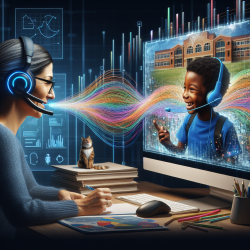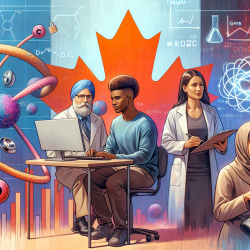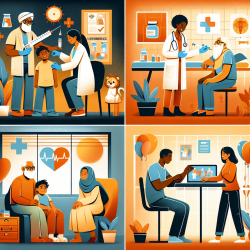Introduction: The Joy of Growing Knowledge
In the dynamic field of speech-language pathology, the opportunity to expand our knowledge and improve children's outcomes is a source of immense joy. At TinyEYE, we believe that every child deserves the best possible support to thrive in their communication journey. By leveraging data-driven insights, we aim to transform speech therapy in schools and create a nurturing environment where children can flourish.
The Role of Data in Speech Therapy
Data is the cornerstone of informed decision-making. In the context of speech therapy, it allows us to tailor interventions to meet the unique needs of each child. By analyzing data from assessments, therapy sessions, and progress reports, we can identify patterns and trends that inform our therapeutic approaches.
For instance, data can reveal which strategies are most effective for certain speech disorders, enabling therapists to adopt evidence-based practices. This not only enhances the quality of therapy but also accelerates the achievement of communication milestones.
Online Therapy: A New Frontier
The advent of online therapy has revolutionized how we deliver speech therapy services in schools. TinyEYE's platform provides a seamless and accessible way for children to receive the support they need, regardless of their location. By utilizing digital tools and resources, we can gather and analyze data more efficiently, allowing for real-time adjustments to therapy plans.
Online therapy also facilitates collaboration between therapists, teachers, and parents, creating a holistic support system for the child. This collaborative approach is essential for ensuring that therapy goals align with the child's educational and developmental objectives.
Case Studies: Data-Driven Success Stories
To illustrate the power of data-driven decisions, let's explore a few success stories from our practice:
- Case Study 1: A child with articulation disorder showed minimal progress with traditional methods. By analyzing session data, we identified a need for visual aids and incorporated them into therapy. The result was a significant improvement in the child's speech clarity.
- Case Study 2: A student with language delay benefited from a data-driven approach that highlighted the importance of incorporating play-based learning. This strategy not only engaged the child but also accelerated language acquisition.
Future Directions: Continuing to Grow Knowledge
As we look to the future, the integration of artificial intelligence and machine learning in speech therapy holds great promise. These technologies can enhance our ability to analyze complex data sets and predict therapy outcomes, leading to more personalized and effective interventions.
Moreover, continuous professional development and knowledge sharing among speech therapists are vital. By fostering a culture of learning and collaboration, we can collectively enhance our skills and contribute to better outcomes for children.
Conclusion: A Call to Action
At TinyEYE, we are committed to using data-driven insights to improve speech therapy in schools. We invite speech therapists to join us on this journey of growing knowledge and creating joyful outcomes for children. Together, we can make a lasting impact on the lives of the children we serve.










